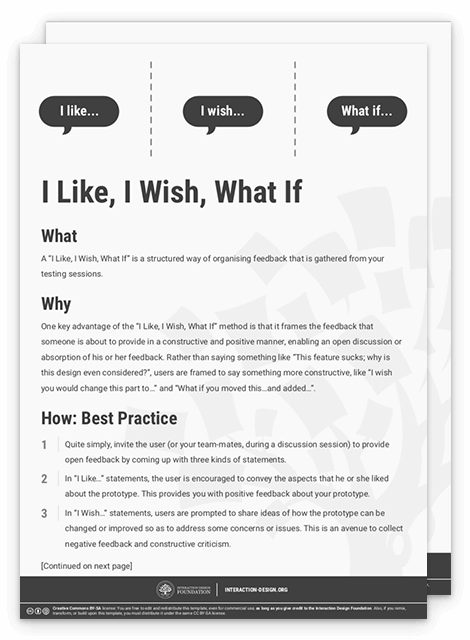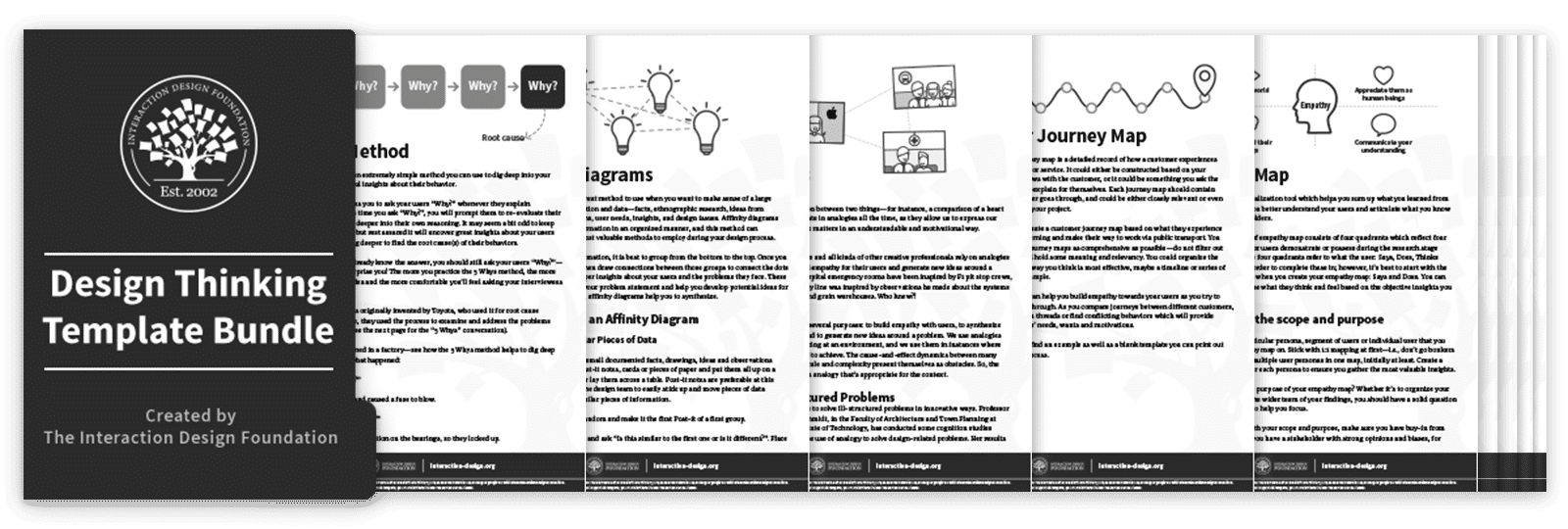Get Your Free Template for “I Like, I Wish, What If”

Download this template to learn how to apply the “I Like, I Wish, What If” method—a structured way of organising feedback that is gathered from your testing sessions. One key advantage of the “I Like, I Wish, What If” method is that it frames the feedback that someone is about to provide in a constructive and positive manner, enabling an open discussion or absorption of his or her feedback. Rather than saying something like “This feature sucks; why is this design even considered?”, users are framed to say something more constructive, like “I wish you would change this part to…”
Get the Entire Bundle of 41 “Design Thinking” Templates

Get your job done faster and better. Get your bundle of 41 high-quality templates!
Members of the Interaction Design Foundation enjoy a discounted price:
Sign up for a membership or log in to save on all template bundles!